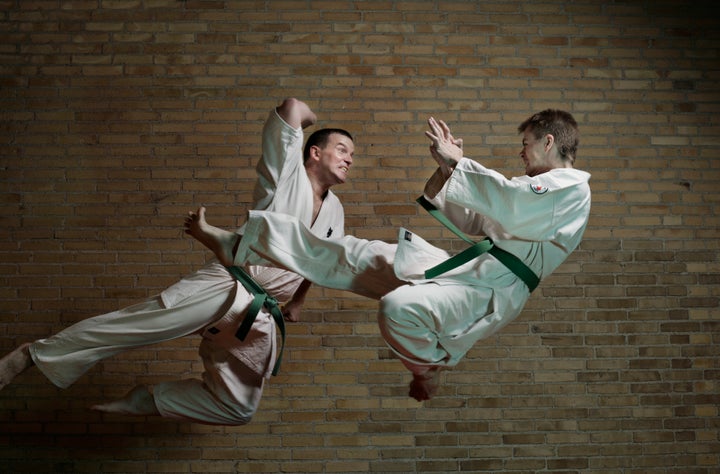
DigitalVision/Getty Images
What basic self-defense techniques should beginners know? originally appeared on Quora - the place to gain and share knowledge, empowering people to learn from others and better understand the world.
Answer by Tim Larkin, Master Close Combat Instructor, NYT Bestselling Author, recently authored When Violence Is The Answer on Quora:
Principles Will Save Your Life, Techniques Will Get You Killed
All beginners should focus on learning correct self-defense principles first rather than techniques. Principles will save your life, techniques will get you killed. The reason most beginners ask for techniques is because there is a desire to quickly memorize a few things and hope that that will take care of all aspects of your self protection.
I understand why people want to just memorize a few techniques, but we need to look at what would actually get you. If you were learning multiplication would you ask a teacher to give you the top three equations to memorize? Say the teacher gave you those three equations and you did memorize them. We all know that would give you a false sense of security in mathematics because in this particular subject you don’t know the principles of multiplication… you just memorized three equations. And I guarantee the first time you needed to use multiplication it would involve two integers that you’ve never multiplied before nor memorized the answer.
So when it comes to your self protection it is most important to start off with the right principles. The first thing a new person has asked himself/herself is what are they training for? Are you training for competition or are you training for self protection? Because each requires two very different skill sets.
If you’re training for competition then you’re entering a world that can require a tremendous amount of discipline, athleticism, and tremendous dedication to training. The goal of training for a combat sport competitive martial art is to display your skill set against an equally matched opponent. In order for competition to work when it comes to violence you’re going to need to gamify violence. The only way you can do that is to remove deliberate injury to the human body. That way you can pit skill against skill, tenacity of will, and the limits of your endurance.
Training for competitive combat sports requires tremendous dedication. When it comes to your self protection you don’t want to be limited by the path of competitive combat sports. Last time I looked at the UFC there were 31 rules, 27 of those rules outlawed injury to the human body. This is absolutely correct because in competitive sports deliberately trying to injure your opponent has no place.
Whereas when it comes to your self protection you want to make sure you make a direct path to injury in order to save your life. The skill sets you want to develop for self protection are the skill sets of destruction. The good news about that is destruction is available to every human being as long as you can think and move. Don’t confuse this with some macho tough guy response that it’s just basic physics and physiology. A new person coming into training for self protection needs to reframe their mind from looking at the differences in humans such as: he’s bigger, faster and stronger, and instead say he has a neck like me, he has eyes like me, has knees like me, etc…
The other area we need to explore is what do we actually have to respond to? I make sure all of my clients understand the difference between antisocial aggression and asocial violence. Antisocial aggression involves communication albeit unpleasant at times. These situations are ultimately avoidable but usually are events that the uninitiated believe they have to respond to with the threat of violence. Situations such as road rage, verbal slights, aggressive drunks, or generally unpleasant social interactions with rude people. These are all eminently avoidable situations where you can use your social skills to talk your way out or use your feet to move you out of there.
The rare case where you would ever use the tool of violence are in the situations of asocial violence. This is where you are devoid of choice and facing imminent grievous bodily harm. Meaning if there was an exit, you would’ve taken it, if you could use your communication skills to de-escalate, you would’ve but you’re facing another human being who is closing distance and intent on doing grievous bodily harm. The threshold to use violence to protect yourself is that if in the situation you’re facing, if you had access to a handgun you would feel completely justified in emptying the magazine into the threat.
So, as you can see, when it comes to your self protection, it is not about memorizing techniques but first understanding when violence would ever be the proper response and how to properly use the tool of violence. So to recap beginners need to determine:
- What are you training for competition or destruction?
- Know the difference between antisocial aggression and asocial violence.
- Focus on physical similarities of all human bodies rather than the differences.
- Get a clear understanding of how to inflict trauma to the human body to produce an injury to save your life.
This question originally appeared on Quora - the place to gain and share knowledge, empowering people to learn from others and better understand the world. You can follow Quora on Twitter, Facebook, and Google+. More questions:
